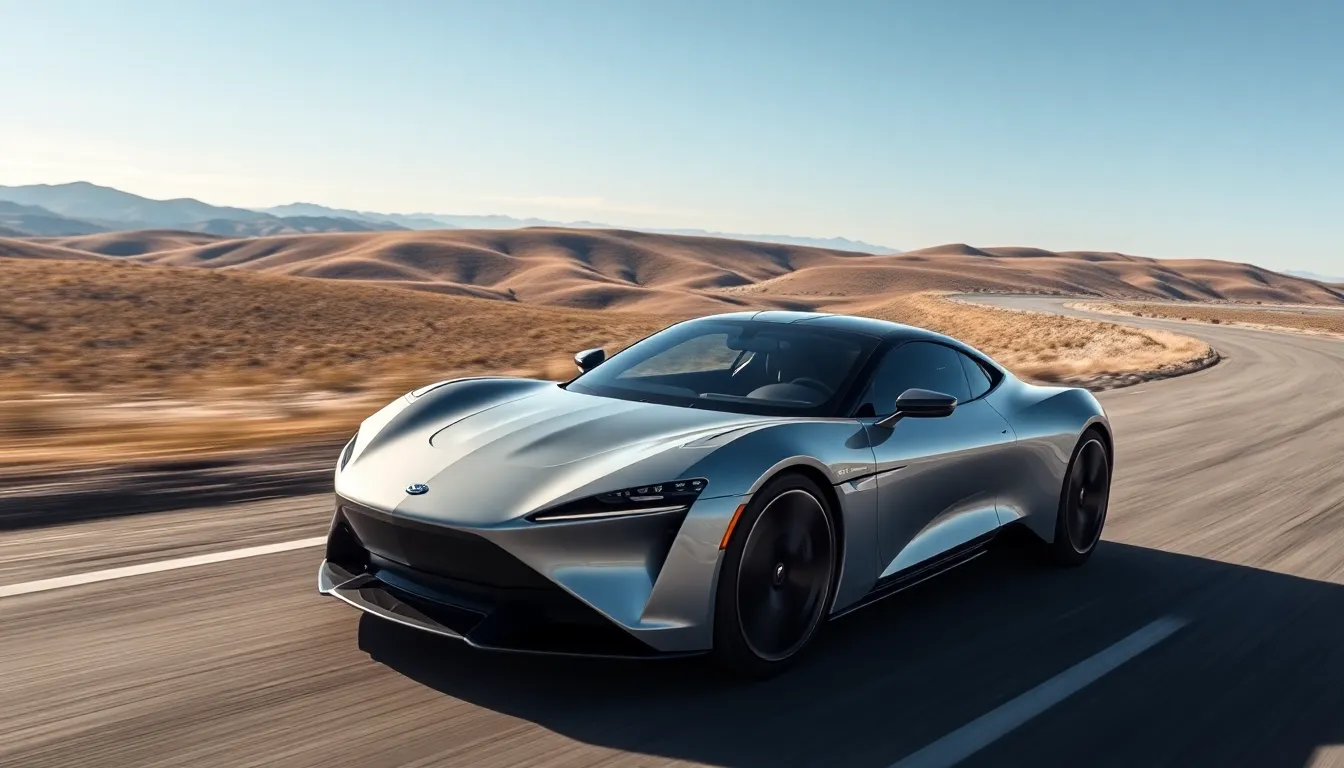Laptops have become the trusty sidekicks of modern life, often more reliable than some friends. With their sleek designs and powerful capabilities, they’ve transformed the way people work, learn, and binge-watch the latest series. But how much do we really know about these portable powerhouses?
Table of Contents
ToggleOverview Of Laptop Statistics
Laptops account for approximately 80% of all computers sold globally, showcasing their popularity. Around 1.5 billion laptops are expected to be in use by 2024, indicating a steady growth trend. The education sector has seen a significant rise in laptop adoption, with over 50% of students using laptops for academic purposes.
Market analysis reveals that the average price of laptops in 2023 is approximately $800, with premium models exceeding $2,000. Consumers often prioritize performance and battery life, contributing to an average battery life of 10 hours per charge for many popular models.
Sales data highlights that Dell, HP, and Lenovo are the top three laptop manufacturers, collectively holding over 60% of the market share. In terms of usage, business professionals account for 40% of laptop users, while casual users represent about 30%.
User satisfaction surveys indicate that over 70% of consumers are satisfied with their laptop performance. It’s essential to note that 58% of laptop users upgrade their devices every three years.
Additionally, recent statistics show a 25% increase in remote work laptop sales since 2020. This shift reflects changing work environments and a growing need for portable technology. Overall, understanding these statistics provides valuable insights into the laptop market and its evolving dynamics.
Market Trends

The laptop market is evolving rapidly, influenced by various factors, including consumer preferences and technological advancements. Recent statistics highlight critical aspects of global sales and growth projections.
Global Sales Data
In the current landscape, laptops represent around 80% of all computers sold globally. Major companies like Dell, HP, and Lenovo command over 60% of the market share. Business professionals contribute significantly to laptop usage, accounting for 40% of the user base. Casual users follow with about 30% of the market. Sales data indicate that the average price of laptops in 2023 is approximately $800, with premium models exceeding $2,000.
Growth Rate Projections
By 2024, around 1.5 billion laptops are expected to be in use, underscoring the device’s essential role in daily life. Notably, the rise in remote work has triggered a 25% increase in laptop sales since 2020. More than 50% of students rely on laptops for academic purposes, reflecting their importance in education. Growth rates are projected to continue climbing as users prioritize performance and battery life, leading to an average battery lifespan of 10 hours per charge.
Usage Patterns
Laptops exhibit varied usage patterns across demographics and sectors. Understanding these patterns reveals insights into consumer behavior and brand preferences.
Popular Brands
Dell, HP, and Lenovo dominate the laptop market, collectively holding over 60% of the global share. These brands consistently rank high in sales due to their reliable performance and diverse product offerings. Additionally, Apple captures a significant portion of the premium segment, attracting users seeking a seamless ecosystem. Market trends indicate that these brands continually adapt to consumer demands while maintaining quality standards. Notably, each brand has tailored its approach to appeal to business professionals and casual users alike, further cementing their positions in the competitive landscape.
Consumer Preferences
Performance and battery life rank as top priorities for laptop users. Data reveals that consumers expect an average battery life of about 10 hours per charge, ensuring usability throughout the day. Price points also play a crucial role, with the average laptop costing around $800 and premium models exceeding $2,000. Surveys show that over 70% of users express satisfaction with their devices, influencing their upgrade cycles. Interestingly, 58% of consumers replace their laptops every three years, often seeking enhanced features and capabilities. As preferences evolve, brands responding to these demands thrive in a dynamic marketplace.
Demographics Of Laptop Users
The demographics of laptop users reveal diverse trends based on age and geography. Understanding these aspects helps highlight usage patterns and preferences.
Age Groups
Young adults aged 18 to 24 represent a significant portion of laptop users, with 45% utilizing laptops for academic and entertainment purposes. Students in this age group often prioritize portability and battery life, reflecting a demand for functional features. Adults aged 25 to 34 follow closely, representing 25% of users, often relying on laptops for both professional and personal tasks. Older age groups, particularly those aged 35 and above, account for the remaining 30%, with many favoring devices for work-related applications and casual usage.
Geographic Distribution
Geographic distribution showcases varied laptop usage patterns across regions. North America leads in laptop ownership, boasting over 40% of global users, primarily driven by remote work needs and educational requirements. Europe follows at 30%, with a strong emphasis on high-performance devices. Asia accounts for approximately 25% of users, highlighting substantial growth potential in emerging markets. Regional preferences also influence brand loyalty, as different demographics gravitate toward specific features, functions, and price ranges in laptops.
Impact Of Technology
Laptops significantly influence technology adoption across various sectors. Innovations such as solid-state drives have improved performance, leading to quicker boot times and enhanced multitasking capabilities. Manufacturers are also integrating better graphics cards, catering to gamers and creative professionals. Rising demand for 2-in-1 devices has further driven versatility, appealing to a broad range of users.
Remote work trends have reshaped the laptop market. Since 2020, there’s been a 25% increase in remote work laptop sales, underscoring the importance of portable technology. Over 40% of business professionals rely on laptops for their daily tasks, making them essential tools for productivity. Education also adapts, with over 50% of students using laptops for academic needs, reflecting changing learning environments. These shifts emphasize how technology impacts buyer behavior and market dynamics.
Laptops have become indispensable tools in today’s fast-paced world. Their impact on education and remote work underscores their versatility and importance. As technology continues to advance consumer preferences are shifting towards devices that offer enhanced performance and longer battery life.
With major brands like Dell HP and Lenovo leading the market the competition drives innovation and improvements. The statistics reveal a clear trend toward increased laptop usage across various demographics highlighting their role in both personal and professional settings.
As the landscape evolves brands that stay ahead of consumer demands will continue to succeed. The growing reliance on laptops reflects not just a shift in technology but also in how people live work and connect.





